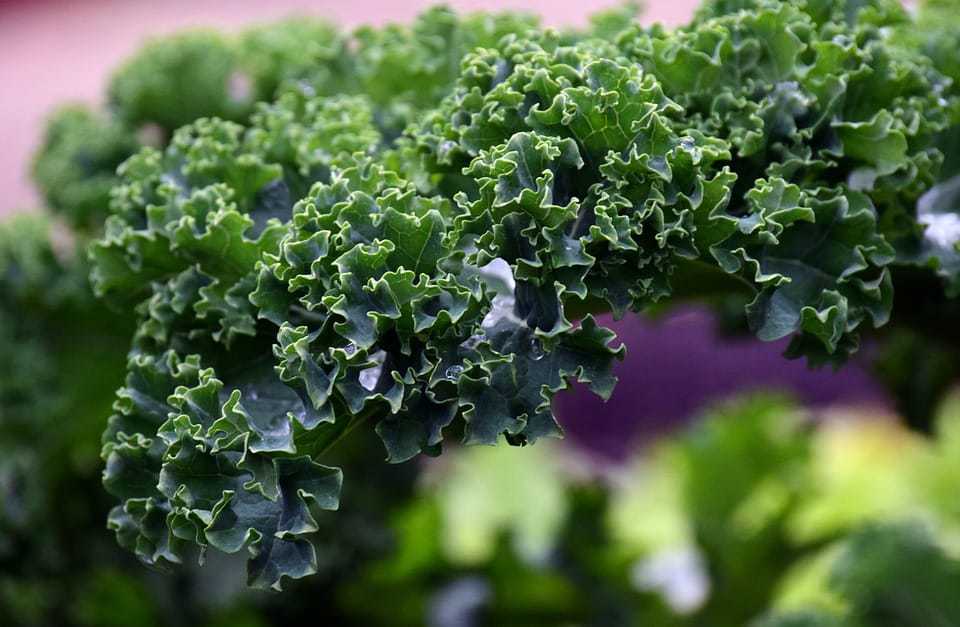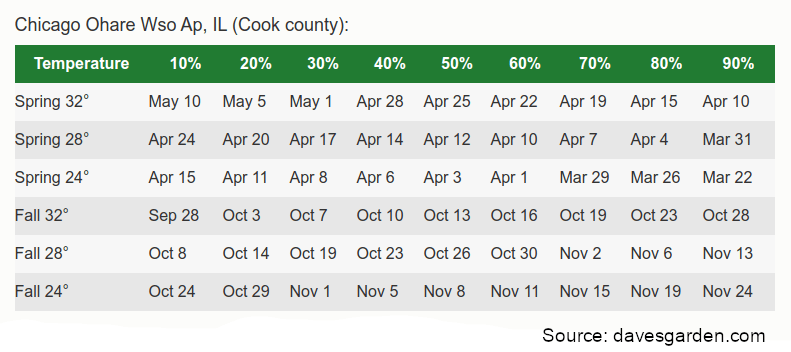Looking up how to grow or plant anything, you’ve seen references to your last frost date (or last spring frost date) and first frost date (or first fall frost date). What does it mean, and why is it important?
To put it simply, your last frost date is the average date you will experience the last frost of the spring, and your first frost date is the average date you can expect the first frost in the fall.
If you live somewhere with winter temperatures below freezing, understanding frost dates is important for planning your garden, sowing your seeds in spring, fall plantings, and when to start doing other things like planting garlic and flower bulbs.
It can also let you know if you have time to plant another crop. All my cucumber plants early this year were destroyed by cucumber beetles, but cucumbers grow quickly and I had a few months left until the fall frost, so as an experiment, I planted another cucumber in late July and had enough time to get a few cucumbers off it in September. My first light frost came in October.
On this page:
Understanding Frost Dates
Frost dates are the dates when you can expect your first or final frosts of the year. This is an average date based on historical weather data for your area, and it’s also based on probability. The Farmer’s Almanac bases its frost dates on a 30% probability of a light frost (28°F/-2.2°C). Dave’s Garden has another tool, which gives you a more detailed look at the probabilities and compares light frosts and killing frosts.
It’s important to know your average frost dates because it lets you know approximately when you are free from frost (between your last and first frost dates) and can grow frost-vulnerable vegetables and flowers.
Always remember that average frost dates are approximate, and the actual frost date may vary year by year. If you have a very mild winter, for instance, your last frost date might come much earlier than usual.
What Are Killing Frosts? What Is A Light Frost?
Killing frosts are temperatures below freezing which kill your plants. A light frost is one that is at or just below freezing, generally 28-32°F (-2.2-0°C), which can still kill some plants. Most fruiting vegetables like tomatoes, peppers, cucumbers, squash, etc. will die without protection from even a light freeze, but most leafy greens thrive in frosty temperatures; for example, kale can survive temperatures down to 10°F (-12°C).

Why Should I Know My Last Frost Date?
Your last frost date (or last spring frost) is important because it signals to you when to transplant frost-tender plants outside. If you find out your average last frost date is on May 11, that means sometime in mid May you can safely plant outdoors. It also means you can sow seeds indoors weeks ahead of this date and get a head start on the growing season.
For example, you can sow tomatoes and peppers indoors at least a month before transplanting. Both are vulnerable to frost, but to avoid stunted plants, you should transplant when night temperatures are at least 50°F (10°C). Because I know my last frost date, I usually start my tomatoes at least 2 to 3 weeks before that date, and usually it’s another few weeks until night temperatures begin to rise.
Why Is My First Frost Date Important?
Your first frost date (or first fall frost) marks the end of the growing season for most plants. Some vegetables like kale, spinach, kohlrabi, cabbage, radishes, and beets will all survive a light frost, but all your summer vegetables will die.
Knowing this date is important for three reasons:
1. You can look at the time between your last frost in spring and first frost in fall and determinate how many days of growing you have. This will let you know if you have enough time in the season to grow vegetables that take a long time to mature. For instance, some winter squash varieties can take over 100 days from transplanting until they’re ready to harvest. If your growing season is relatively short, that means you need to plant those vegetables earlier to guarantee a harvest.
2. If you know your first frost date, you can determine when to plant a fall crop. For example, I love growing kohlrabi, but I’ve noticed I get more success if it grows in the fall. Based on my first frost date and the variety that I prefer to grow (Early Purple Vienna Kohlrabi) I know that if I sow seeds in the middle of July, I’ll have enough time to grow a crop of kohlrabi for a harvest in October.
3. Some plants need to be planted in the fall and go dormant in winter before they can grow in spring. This includes all your flower bulbs and garlic. Garlic and most flower bulbs, for example, should be planted within a few weeks to a month of your average first frost date.
“Average frost dates are approximate, and the actual frost date may vary year by year.”
Other Important Temperatures to Remember
Although tomatoes, peppers, eggplants, cucumbers, etc. will die if left out in a frost, that doesn’t mean they can be planted outside as soon as the risk of frost has passed. A lot of fruiting vegetables are best transplanted after temperatures stay above 50°F (10°C). If night temperatures drop down to a few degrees above freezing, that can stunt the growth of these cold-sensitive vegetables.
For some other vegetables, like beans, not only are they frost tender, they also need warmer temperatures for the seeds to germinate properly and the sprouts to grow. Beans need a minimum soil temperature of 60°F (15.6°C) to avoid germination issues, and sprout best when soil is at least 70°F (21.1°C). Some gardeners will cover the ground with clear plastic after sowing beans so the soil stays warm until the sprouts emerge.
How to Find Your Frost Dates (With Examples)
There are several resources you can use to find your frost dates. I use the Farmer’s Almanac and Dave’s Garden.
Just type in your city and state, or zip code, and you will get the results. If you don’t find your city, use the frost dates for the closest city in your area.
If you just need a quick search for your frost dates, use the Farmer’s Almanac, which bases its numbers on a 30% probability of a light frost (28°F/-2.2°C).
If you want more detailed data, use Dave’s Garden. You can find the probability of frost on each day from 10% to 90%, and for light, moderate, and heavy killing frosts.
Example on the Farmer’s Almanac:
Looking for frost dates in Chicago, you can see that the last spring frost is on April 29, and first fall frost is on October 12. This is based on a 30% chance of frost.

Example on Dave’s Garden:
Again, looking at Chicago, we can now that there is a very high (90%) chance of a spring frost on April 10, and a very low (10%) chance of frost on May 10. Similarly, Chicagoans can expect their first light frost sometime between September 28 (low chance) to October 28 (high chance). Heavy frosts are more likely to come in late October through November.

